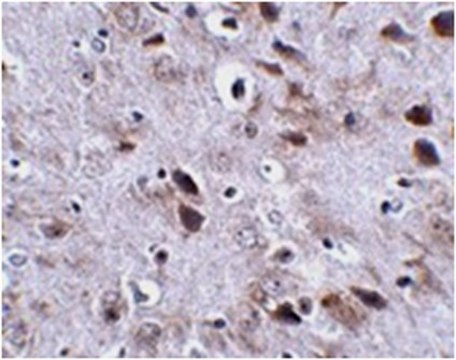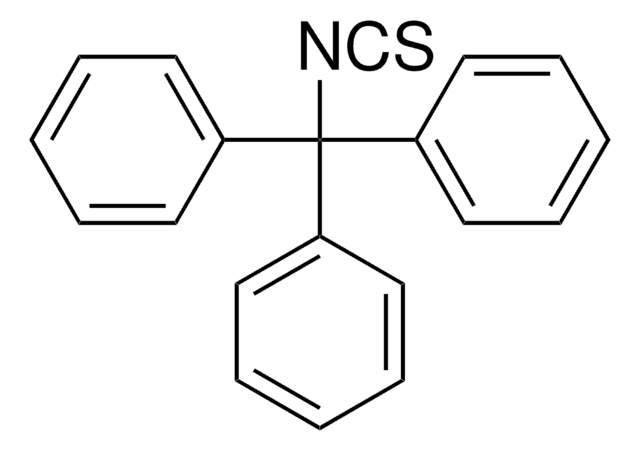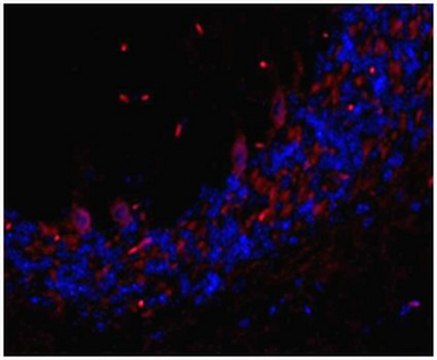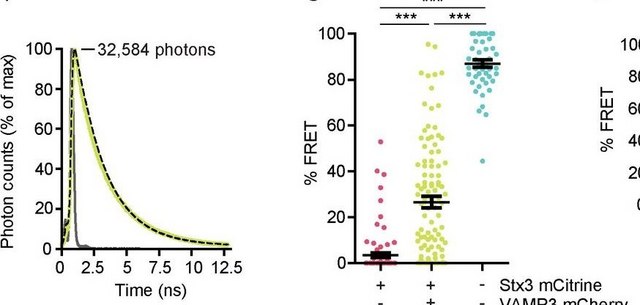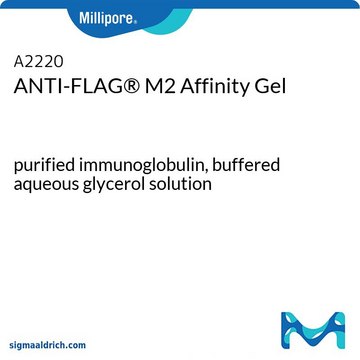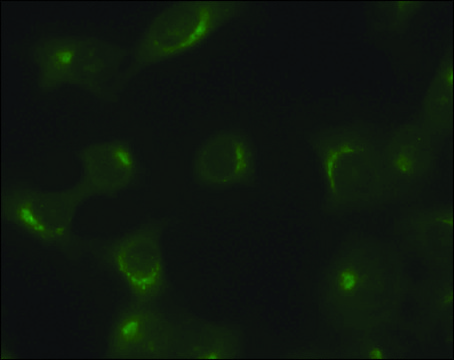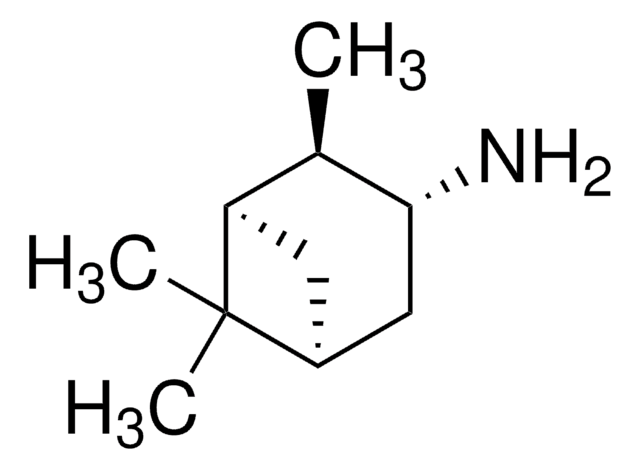推荐产品
生物来源
rabbit
质量水平
抗体形式
affinity isolated antibody
抗体产品类型
primary antibodies
克隆
polyclonal
纯化方式
affinity chromatography
种属反应性
mouse
包装
antibody small pack of 25 μg
技术
immunofluorescence: suitable
immunohistochemistry: suitable (paraffin)
immunoprecipitation (IP): suitable
western blot: suitable
同位素/亚型
IgG
NCBI登记号
UniProt登记号
靶向翻译后修饰
unmodified
基因信息
mouse ... Tmem100(67888)
一般描述
Transmembrane protein 100 (UniProt: Q9CQG9; also known as TMEM100) is encoded by the Tmem100 gene (Gene ID: 67888) in murine species. TMEM100 is a multi-pass membrane protein that is shown to be involved in renal development, vasculogenesis and lung cancer invasiveness. It plays a role during embryonic arterial endothelium differentiation and vascular morphogenesis through the ACVRL1 receptor-dependent signaling pathway upon stimulation by bone morphogenetic proteins, such as GDF2/BMP9 and BMP10. TMEM100 is also involved in the regulation of nociception by forming a complex with TRPA1 and TRPV1 and act as a modulator of their interaction in dorsal root ganglia (DRG) neurons. It is reported to weaken TRPA1 and TRPV1 interaction, thereby releasing the inhibition of TRPA1 by TRPV1 and increasing the single-channel open probability of the TRPA1-TRPV1 complex. TMEM100-deficient mice show a reduction in inflammatory mechanical hyperalgesia and TRPA1- but not TRPV1-mediated pain. A mutation involving aa 117-119 KRR to QQQ is shown to abolish TMEM100 interaction with TRPA1, but increases interaction with TRPV1. Mutations is Tmem100 gene can lead to embryonic lethality due to impaired differentiation of arterial endothelium and defects of vascular morphogenesis. (Ref.: Weng, H-J., et al. (2015). Neuron 85(4), 833-846).
特异性
This rabbit polyclonal antibody detects transmembrane protein 100 (TMEM100) in murine cells. It targets an epitope with the 19 amino acids from the N-terminal end.
免疫原
KLH-conjugated linear peptide corresponding to 19 amino acids from the N-terminus region of murine Transmembrane protein 100 (TMEM100).
应用
Anti-TMEM100, Cat. No. ABN1721, is a highly specific rabbit polyclonal antibody that targets Transmembrane protein 100 and has been tested in Immunofluorescence, Immunohistochemistry (Paraffin), Immunoprecipitation, and Western Blotting.
Immunohistochemistry Analysis: A 1:50-250 dilution from a representative lot detected TMEM100 in mouse colon, rat peripheral nerve, and human cerebral cortex tissues.
Immunofluorescence Analysis: A representative lot detected TMEM100 in DRGs (Weng, H.J., et. al. (2015). Neuron. 85(4):833-46).
Western Blotting Analysis: A representative lot detected TMEM100 in DRG from cervical to lumbar levels (Weng, H.J., et. al. (2015). Neuron. 85(4):833-46).
Immunoprecipitation Analysis: representative lot detected TMEM100 in whole-cell DRG or CHO cells lysates (Weng, H.J., et. al. (2015). Neuron. 85(4):833-46).
Western Blotting Analysis: A 1:5,000 dilution from a representative lot detected TMEM100 in Dorsal root ganglion (DRG) of WT & TMEM100 CKO mice (Courtesy of Drs. Hao-Jui Weng and Xinzhong Dong at Johns Hopkins University).
Immunofluorescence Analysis: A 1:200 dilution from a representative lot detected TMEM100 in Dorsal root ganglion (DRG) sections from Avil-Cre;Tmem100+/+ (Wild Type mice) and Avil-Cre;Tmem100fl/fl (Tmem100 CKO) mice (Courtesy of Drs. Hao-Jui Weng and Xinzhong Dong at Johns Hopkins University).
Immunofluorescence Analysis: A representative lot detected TMEM100 in DRGs (Weng, H.J., et. al. (2015). Neuron. 85(4):833-46).
Western Blotting Analysis: A representative lot detected TMEM100 in DRG from cervical to lumbar levels (Weng, H.J., et. al. (2015). Neuron. 85(4):833-46).
Immunoprecipitation Analysis: representative lot detected TMEM100 in whole-cell DRG or CHO cells lysates (Weng, H.J., et. al. (2015). Neuron. 85(4):833-46).
Western Blotting Analysis: A 1:5,000 dilution from a representative lot detected TMEM100 in Dorsal root ganglion (DRG) of WT & TMEM100 CKO mice (Courtesy of Drs. Hao-Jui Weng and Xinzhong Dong at Johns Hopkins University).
Immunofluorescence Analysis: A 1:200 dilution from a representative lot detected TMEM100 in Dorsal root ganglion (DRG) sections from Avil-Cre;Tmem100+/+ (Wild Type mice) and Avil-Cre;Tmem100fl/fl (Tmem100 CKO) mice (Courtesy of Drs. Hao-Jui Weng and Xinzhong Dong at Johns Hopkins University).
质量
Evaluated by Western Blotting in mouse lung tissue lysate.
Western Blotting Analysis: 1 µg/mL of this antibody detected TMEM100 in 10 µg of mouse lung tissue lysate.
Western Blotting Analysis: 1 µg/mL of this antibody detected TMEM100 in 10 µg of mouse lung tissue lysate.
目标描述
~17 kDa observed; 14.50 kDa calculated. Uncharacterized bands may be observed in some lysate(s).
其他说明
Concentration: Please refer to lot specific datasheet.
未找到合适的产品?
试试我们的产品选型工具.
储存分类代码
12 - Non Combustible Liquids
WGK
WGK 1
闪点(°F)
Not applicable
闪点(°C)
Not applicable
法规信息
新产品
我们的科学家团队拥有各种研究领域经验,包括生命科学、材料科学、化学合成、色谱、分析及许多其他领域.
联系技术服务部门